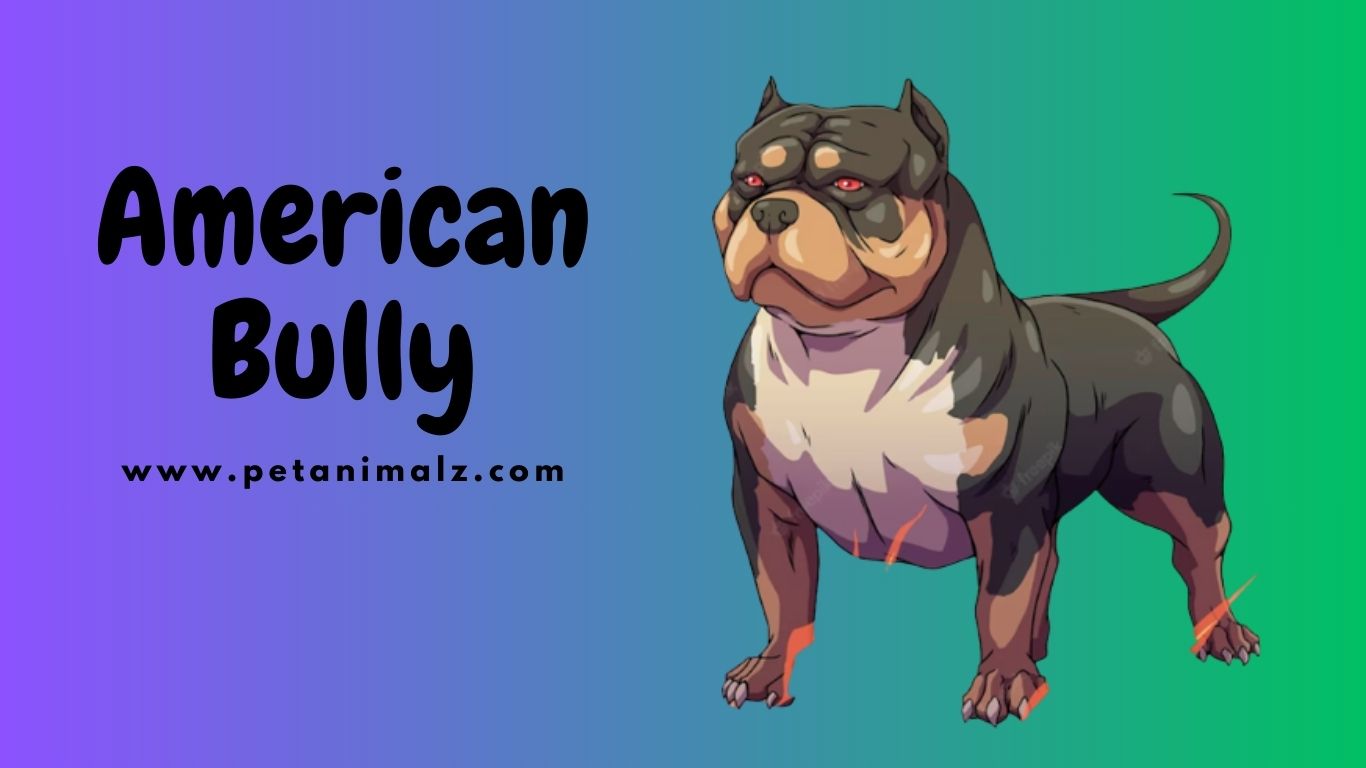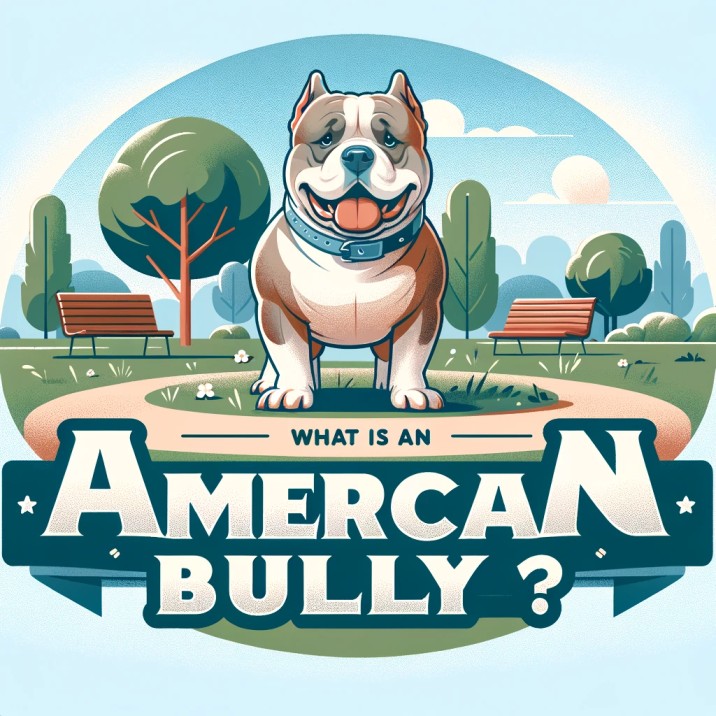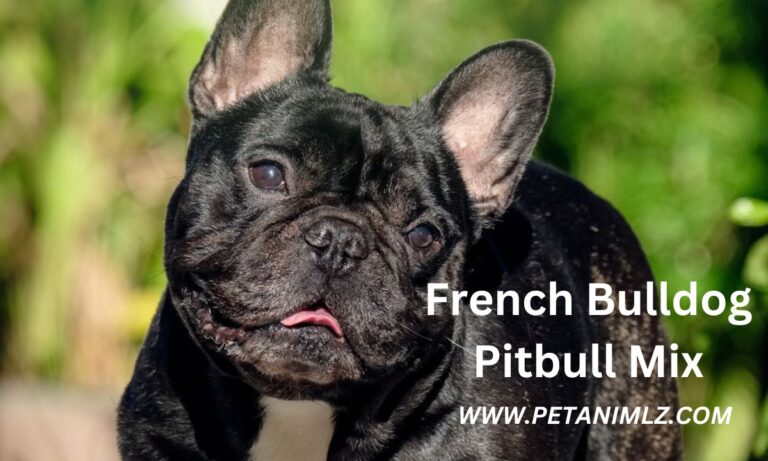What is an American Bully?
Introduction
This article highlights the important aspect of American Bully. The American Bully is a unique breed of dog, known for its muscular build, short coat, and friendly demeanor. This breed has gained popularity in recent years due to its loyalty, intelligence, and suitability as a family pet.
This article helps to understand the breed importance, its history and its characteristics. Understanding the breed is crucial for potential owners, as it helps in providing the right care and environment for these dogs.

History of the American Bully
The American Bully breed originated in the mid-1990s, with the aim of creating the ultimate family companion. Breeders combined the desirable traits of the UKC American Pit Bull Terrier and the AKC American Staffordshire Terrier to create this breed. Some lines have even incorporated other bully breeds into the mix.
The breed’s origins can be traced back to both the East and West Coast of the United States, primarily in Virginia and Los Angeles, California. Today, the American Bully has spread to all parts of the U.S., and can even be seen in Europe and Asia.
The American Bully is recognized by several kennel clubs, including the American Bully Kennel Club (ABKC), the American Canine Association Inc. (ACA), and the United Kennel Club (UKC). Each club has its own standards and categories for the breed, further diversifying the American Bully. Despite the breed’s relatively recent origin, it has quickly gained recognition and popularity due to its unique characteristics and suitability as a family pet.
Characteristics and Care of American Bully
Physical Characteristics
The American Bully is a breed that stands out due to its distinct physical characteristics. These dogs are muscular and compact with a powerful build. They have a short, close, and glossy coat that is stiff to the touch. The breed comes in all colors and patterns, adding to their unique appeal.
There are different types of American Bullies, each with its own set of physical characteristics:
- Standard: This is the original type, displaying a balanced and correct structure.
- Classic: Similar to the Standard, but with a lighter body frame and less body mass.
- XL: Larger than the Standard and Classic, the XL is muscular and heavy-set.
- Pocket: Smaller in size, but still maintaining the muscular and compact build of the breed.
Other Names of American Bully
The American Bully is often referred to by several names, depending on their size categories and sometimes colloquially based on their appearance. Here are some of the names:
- Bullypit: This is a common name used to refer to the American Bully, often used interchangeably with the breed name.
- Bully: This is a shortened version of the breed name and is commonly used.
Size Categories:
- Pocket Bully: This refers to a smaller-sized American Bully. Despite their smaller size, they still possess the same breed characteristics.
- Standard Bully: This is the term used to refer to the standard-sized American Bully.
- XL Bully: This refers to the larger-sized American Bully, which is taller and heavier than the standard size.
- Micro Bully: This is a term used to refer to an even smaller size than the Pocket Bully.
- Extreme Bully: This term is used to describe American Bullies that display exaggerated breed traits, such as a more muscular build or a wider body.
The key characteristics of the American Bully:
- Height: The height of an American Bully can vary significantly depending on the specific size category of the dog. Here are the general ranges:
- Pocket: under 17 inches (43 cm) at the withers
- Standard: 17-20 inches (43-51 cm) at the withers
- XL: 20-23 inches (51-58 cm) at the withers
- Weight: The weight of an American Bully also varies with size:
- Pocket: 30-50 pounds (14-23 kg)
- Standard: 40-60 pounds (18-27 kg)
- XL: 50-80 pounds (23-36 kg)
- Size: As mentioned above, American Bullies come in different sizes, namely Pocket, Standard, and XL. There are also “Micro” and “Extreme” categories, but these are less recognized and often associated with breeding practices that prioritize extreme physical traits.
- Life Expectancy: The average lifespan of an American Bully is around 8-13 years, but some can live longer with proper care and regular veterinary check-ups.
- Grooming: American Bullies have a short, smooth coat that is relatively low-maintenance. Regular brushing will help to keep the coat healthy and reduce shedding. They are not hypoallergenic. Like all dogs, they also require regular dental care, nail trims, and ear checks.
- Origin: The American Bully was developed in the United States in the 1980s and 1990s. It was bred as a companion dog from various breeds, including the American Pit Bull Terrier and the American Staffordshire Terrier.
- Group: The American Bully is recognized by the United Kennel Club (UKC) and the American Bully Kennel Club (ABKC). The UKC classifies them under the “Terrier” group, while the ABKC has a separate group for them. The American Kennel Club (AKC) does not currently recognize the American Bully as a distinct breed.
Temperament
The American Bully is known for its stable and confident temperament. These dogs are outgoing, good-natured, and extremely loyal. They are gentle and loving towards people, making them excellent family pets.
Despite their muscular appearance, American Bullies are not aggressive dogs. They are known for their courage and are protective of their owners, but they are not inherently aggressive. Misconceptions about the breed’s aggression often stem from a lack of understanding about the breed.
Training and Socializing
Early socialization is crucial for the American Bully. This helps them to be well-adjusted and comfortable in various situations. Training should be consistent and firm, but not harsh. These dogs are eager to please and respond well to positive reinforcement techniques.
Health and Grooming
American Bullies are generally healthy dogs, but like all breeds, they can be prone to certain health conditions. Regular vet check-ups and a good diet can help maintain their health. Their short coat is easy to groom, requiring only regular brushing and occasional baths.
Diet and Exercise
A balanced diet is essential for the American Bully. They should be fed high-quality dog food appropriate to their age, size, and activity level. Regular exercise is also important to keep these active dogs healthy and happy. This can include daily walks, playtime, and other physical activities.
FAQs
Here are some common questions people often ask about the American Bully breed, along with brief answers:
What is a fact about American Bullies?
American Bullies are known for their muscular build, friendly demeanor, and loyalty. They were bred in the mid-1990s with the aim of creating the ultimate family companion.
What is a real American Bully?
A real American Bully is a breed that originated from the American Pit Bull Terrier and the American Staffordshire Terrier. They are recognized by several kennel clubs and are known for their muscular build and friendly temperament.
What is American Bully good for?
American Bullies make excellent family pets due to their friendly and protective nature. They are also good for active individuals as they require regular exercise.
How smart is American Bully?
American Bullies are intelligent dogs. They are quick learners and respond well to training, especially when it involves positive reinforcement.
Is American Bully danger?
No, American Bullies are not inherently dangerous. They are often misunderstood due to their muscular appearance, but they are generally friendly and good-natured.
What is the attitude of an American Bully?
American Bullies have a confident and stable temperament. They are outgoing, good-natured, and extremely loyal.
How powerful is an American Bully?
American Bullies are powerful in terms of their physical strength due to their muscular build. However, they are not aggressive and use their strength in a protective manner.
Are bully dogs loyal?
Yes, American Bullies are known for their loyalty. They form strong bonds with their families and are protective of their owners.
Are bully dogs strong?
Yes, American Bullies are strong dogs. They have a muscular build and require regular exercise to maintain their strength.
Is Bully better than Pitbull?
It’s not accurate to say one breed is better than the other. Both American Bullies and Pitbulls have their unique characteristics and suitability depends on the owner’s lifestyle and preference.
Why American Bullies are the best?
American Bullies are considered the best by many due to their friendly nature, loyalty, and adaptability. They are great family pets and are also suitable for active individuals.
How do you train an American Bully?
American Bullies should be trained with consistency and positive reinforcement. Early socialization is also important for this breed.
Conclusion
The American Bully is a breed of dog that was developed in the United States in the 1980s and 1990s. It is a compact and medium-sized breed, often mistaken for other breeds like the American Pit Bull Terrier and the American Staffordshire Terrier.
The breed was created with the purpose of being a family companion dog. It is known for its friendly and amiable disposition, intelligence, and great looks. Despite their muscular and intimidating appearance, American Bullies are typically very friendly dogs.
They come in a variety of sizes, from very small (micro) to large, and have a variety of color patterns. The breed is known for its muscular build, short coat, and distinctive blocky head.
American Bullies require regular exercise to maintain their muscle tone. They are relatively easy to train but require a firm, consistent hand due to their strong will. The breed’s reputation can vary significantly depending on the region.
In some areas, they are seen as a symbol of status, while in others, they are often associated with negative stereotypes due to their physical resemblance to breeds often used in illegal dog fighting.






